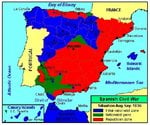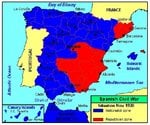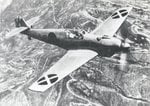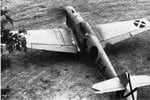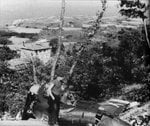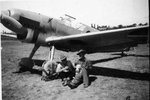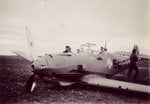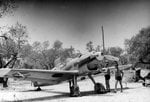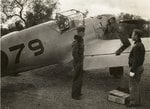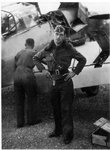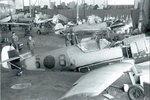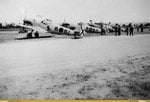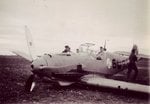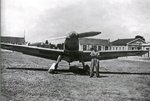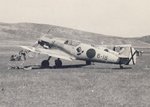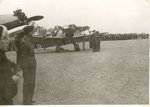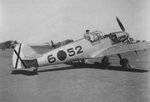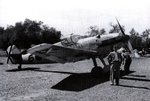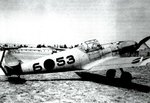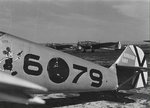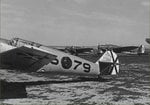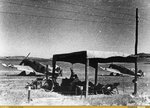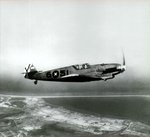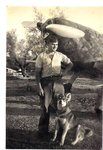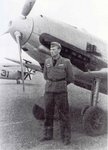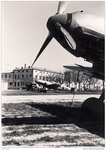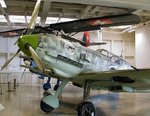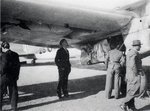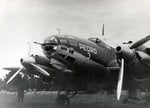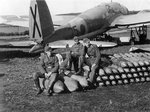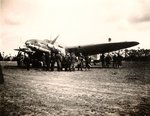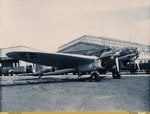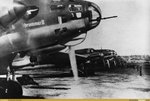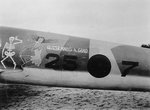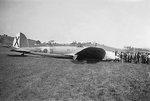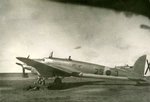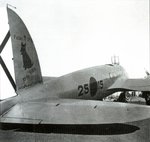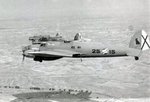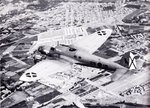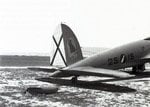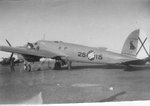The Spanish Civil War arose out a variety of factors, chiefly the election of a Republican government made up of a shaky alliance of various centrist and leftist elements. The Second Spanish Republic instituted a number of controversial reforms which led to a revolt by conservative and monarchist ("Nationalist") forces, led at the outset by a military insurrection on the part of General Francisco Franco and other Nationalist generals. Sides were immediately taken amongst the international community, with Mexico, the Soviet Union, and the volunteer International Brigades supporting the Republicans and Mussolini's Italy and Hitler's Germany supporting the Nationalists. The support for the Republican side was mainly in the form of material support from the Soviet Union, and it was slow in coming. Conversely, Fascist Italy and Nazi Germany almost immediately joined in their support of the Spanish Civil War with troops, aircraft, tanks and other weapons. Among other political reasons for supporting Nationalist Spain (establishing a Fascist power in Western Europe, threatening France, etc.), Nazi Germany had military reasons as well. To quote Hermann Göring, commander of the Luftwaffe, at the Nuremberg trials (tribunals whose purpose was to prosecute war criminals after World War II):
In the Spanish Civil War, the Luftwaffe would receive the first major test of its tactics of aerial combat and in the support of ground forces. The Condor Legion, a unit of the Luftwaffe created especially to support the Spanish Nationalist forces, would participate in bombing missions, troop movement, and fly against experienced Soviet pilots supporting the Republicans, thus gaining vital experience in the blitzkrieg which would later be put to use in Poland. The event which would characterize the Condor Legion's involvement in Spain and create a deep impact on the Luftwaffe and the other nations of Europe would be the bombing of Guernica (now Gernika-Lumo) on April 26th, 1937. At the time, Guernica was the center of Basque culture and government, and an important Republican stronghold, interposed between Nationalist forces and the northern Republican city of Bilbao. The Basques (Euskaldunak) are an ethnic group of Northern Spain and France which had supported the Republican government in exchange for autonomy. Despite the fact that Guernica had not by this point actively participated in the war, it was considered a military target in that it housed some Republican battalions, and its defeat by Nationalist forces would cut off Bilbao from other Republican forces, thus speeding Nationalist victory in Spain's north.
The assault on Guernica by the Condor Legion began in the afternoon and consisted of several waves of bombers with their escorts (mostly Junkers Ju 52 and He 111s in the first waves, with the Bf 109s supporting later raids and strafing the roads) dropping explosives onto the town below. The principal targets were the roads and a bridge to the east of Guernica, the destruction of which would block an enemy retreat. Although the pilots were given orders not to directly target civilians, the bombing led to many civilian casualties. (The exact numbers are disputed, but the estimate is between 200 - 1700.) The bombing shattered Guernica's defenses and the Nationalist forces quickly overran the town. The bombing of Guernica received lots of international attention from the press and inspired the famous painting by Pablo Picasso.
In Spain, the Luftwaffe gained experience in using their aircraft technology to achieve air superiority and to support ground forces. These lessons learned would serve the Luftwaffe well as World War II would begin in the East and in the great aerial battles, such as the Battle of Britain. At the outset of World War II, because of the experience gained during the Spanish Civil War, the Luftwaffe would be the most prepared for the new strategies of war that would emerge in this period. While sources vary on the number and type, most agree that 130-140 Messerschmitt Bf 109's served in Spain: approximately 4 prototypes, 40+ Berthas, 5 Claras, 35 Doras, and 44 Emils. By early 1939, when the 109E's arrived, the Republican opposition had nearly collapsed; twenty of these models were left behind for Spain's air force. Bf 109 pilots like Werner Moelders and Wolfgang Schellmann distinguished themselves in Spain. Moelders is credited with developing the "finger four" formation, which became the standard fighter formation for decades. Moelders scored 14 kills in Spain, the top German ace of that conflict. Over 200 German pilots flew with the Condor Legion, gaining precious combat experience that would serve them well in WW2.
Note: This thread is a remake. I am going to add more information and new pictures, but it will basicly contain all the data provided before.
"When the Civil War broke out in Spain, Franco sent a call for help to Germany and asked for support, particularly in the air. ... I urged him [Adolf Hitler] to give support under all circumstances, firstly, in order to prevent the further-spread of communism in that theater and, secondly, to test my young Luftwaffe at this opportunity in this or that technical respect."
In the Spanish Civil War, the Luftwaffe would receive the first major test of its tactics of aerial combat and in the support of ground forces. The Condor Legion, a unit of the Luftwaffe created especially to support the Spanish Nationalist forces, would participate in bombing missions, troop movement, and fly against experienced Soviet pilots supporting the Republicans, thus gaining vital experience in the blitzkrieg which would later be put to use in Poland. The event which would characterize the Condor Legion's involvement in Spain and create a deep impact on the Luftwaffe and the other nations of Europe would be the bombing of Guernica (now Gernika-Lumo) on April 26th, 1937. At the time, Guernica was the center of Basque culture and government, and an important Republican stronghold, interposed between Nationalist forces and the northern Republican city of Bilbao. The Basques (Euskaldunak) are an ethnic group of Northern Spain and France which had supported the Republican government in exchange for autonomy. Despite the fact that Guernica had not by this point actively participated in the war, it was considered a military target in that it housed some Republican battalions, and its defeat by Nationalist forces would cut off Bilbao from other Republican forces, thus speeding Nationalist victory in Spain's north.
The assault on Guernica by the Condor Legion began in the afternoon and consisted of several waves of bombers with their escorts (mostly Junkers Ju 52 and He 111s in the first waves, with the Bf 109s supporting later raids and strafing the roads) dropping explosives onto the town below. The principal targets were the roads and a bridge to the east of Guernica, the destruction of which would block an enemy retreat. Although the pilots were given orders not to directly target civilians, the bombing led to many civilian casualties. (The exact numbers are disputed, but the estimate is between 200 - 1700.) The bombing shattered Guernica's defenses and the Nationalist forces quickly overran the town. The bombing of Guernica received lots of international attention from the press and inspired the famous painting by Pablo Picasso.
In Spain, the Luftwaffe gained experience in using their aircraft technology to achieve air superiority and to support ground forces. These lessons learned would serve the Luftwaffe well as World War II would begin in the East and in the great aerial battles, such as the Battle of Britain. At the outset of World War II, because of the experience gained during the Spanish Civil War, the Luftwaffe would be the most prepared for the new strategies of war that would emerge in this period. While sources vary on the number and type, most agree that 130-140 Messerschmitt Bf 109's served in Spain: approximately 4 prototypes, 40+ Berthas, 5 Claras, 35 Doras, and 44 Emils. By early 1939, when the 109E's arrived, the Republican opposition had nearly collapsed; twenty of these models were left behind for Spain's air force. Bf 109 pilots like Werner Moelders and Wolfgang Schellmann distinguished themselves in Spain. Moelders is credited with developing the "finger four" formation, which became the standard fighter formation for decades. Moelders scored 14 kills in Spain, the top German ace of that conflict. Over 200 German pilots flew with the Condor Legion, gaining precious combat experience that would serve them well in WW2.
Note: This thread is a remake. I am going to add more information and new pictures, but it will basicly contain all the data provided before.
Attachments
Last edited:

